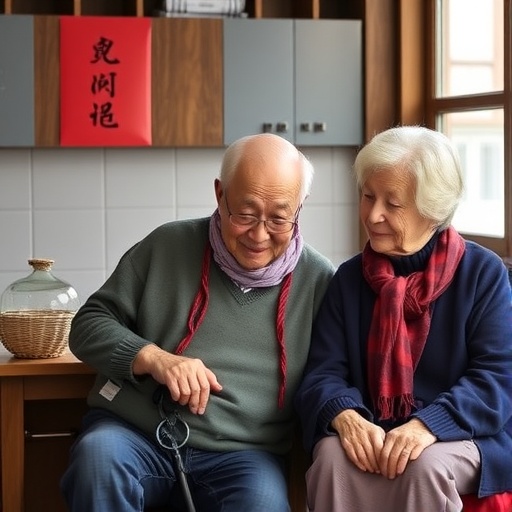Results from a six-month, multi-site clinical trial called the Wireless Innovation for Seniors with Diabetes Mellitus (WISDM) Study Group have been published by the Journal of the American Medical Association (JAMA).

Credit: UNC School of Medicine
CHAPEL HILL, NC – Results from a six-month, multi-site clinical trial called the Wireless Innovation for Seniors with Diabetes Mellitus (WISDM) Study Group have been published by the Journal of the American Medical Association (JAMA).
Older adults with type 1 diabetes (T1D), a growing but under-studied population, are prone to hypoglycemia, particularly when diabetes is longstanding. Hypoglycemia can cause altered mental status and sometimes seizure or loss of consciousness, which can prove fatal. But according to this study, older adults who use continuous glucose monitoring (CGM) devices can significantly reduce the occurrence of hypoglycemia and severe hypoglycemic events while also reducing hemoglobin A1c.
The objective of the study was to determine if the use of CGM can reduce hypoglycemia among older adults with type 1 diabetes (T1D). A CGM device continuously measures blood sugar and provides real-time observation of glucose levels, trend direction, and alarms for when glucose drops to low levels or increases to high levels.
“Reducing hypoglycemia is an important aspect of management of T1D in older adults, many of whom have difficultly recognizing symptoms of hypoglycemia or cognitive impairment,” said UNC’s principal investigator Laura Young, MD, PhD, associate professor of medicine in the division of endocrinology and metabolism at the UNC School of Medicine.
The study was a randomized, controlled trial involving 203 men and women over the age of 60 at 22 clinical centers, including UNC-Chapel Hill. About half of participants were receiving insulin via an insulin pump and the other half used multiple daily injections of insulin. Half of participants were randomly assigned to a group using a Dexcom CGM device, and the other half to a control group using the standard finger-stick method with test strips for blood glucose monitoring.
The study found that the amount of time glucose levels were in a hypoglycemia range (
- CGM users were far less likely to have a severe hypoglycemic event compared to the control group using blood glucose meter checks; 10 participants in the control group had a severe hypoglycemic event compared with only one participant in the CGM group. Five of the 10 severe hypoglycemic events reported in the control group involved seizure or loss of consciousness, which did not occur in the one CGM group event.
- Reducing hypoglycemia did not come at the cost of worsening overall glucose control. The average hemoglobin A1c (HbA1c, an estimate of blood glucose control over a 3-month period) for the CGM group improved from 7.6% at the start of the study to 7.2% at 6-months. The control group HbA1c was 7.5% at the start of the study and 7.4% at 6-months. The American Diabetes Association recommends an HbA1c target of
- Very low or very high blood glucose episodes can be dangerous. Regular CGM use increased the amount of time in target range (glucose levels of 70 mg/dL to 180 mg/dL) by more than two hours a day.
Another striking discovery was that 81% of study participants were still using the CGM devices seven days per week at six months. These results are important because they demonstrate CGM can be used effectively in an older adult population to reduce hypoglycemia, as well as improve overall glucose control. Because hypoglycemia can lead to serious complications, including hospitalization and death, the reduction in severe hypoglycemic events could have important public health implications.
“For too long, the older population with diabetes has suffered from not-so-benign neglect from the medical community,” Young said. “Despite the high prevalence of diabetes and its complications in this age group, very few studies have addressed the potential utility of new technologies in this population. In part, this may be due to the mistaken belief that older adults can’t manage or benefit from advanced technologies. Our study shows quite the opposite. Not only does CGM improve safety in older adults, it actually improves overall glycemic control. Moreover, the overwhelming majority of patients in our study used CGM most days for the entire duration of the study, demonstrating a high level of comfort with the technology in this population.”
In addition, the treatment impact on reducing hypoglycemia at six months was present on those using insulin pump as well as those using multiple injections of insulin. The effective use of CGM in those using multiple injections of insulin has important implications as these patients likely will not make the switch to more advanced technologies that automate insulin.
###
Funding for the study was provided by JDRF and the Leona M. and Harry B. Helmsley Charitable Trust. CGM devices were provided by Dexcom, Inc. at no cost.
Media Contact
Carleigh Gabryel
[email protected]
Original Source
http://news.





